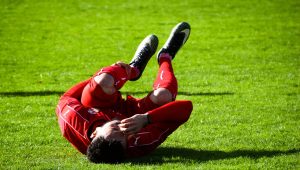
Following a structured recovery plan is essential after ACL (anterior cruciate ligament) surgery. This plan is usually individualized based on the specifics of the surgery, the patient’s general health, and the surgeon’s or physical therapist’s recommendations. Below is a general timeline for post-ACL surgery precautions and recovery. However, always consult your healthcare provider for the most accurate and personalized advice.
Week 1-2: Immediate Post-Operation
- Pain Management: Take pain medications as prescribed by the doctor.
- Mobility: You will likely be using crutches to avoid putting weight on the operated leg.
- Icing and Elevation: Apply ice and elevate the leg to manage swelling.
- Bracing: You may be required to wear a knee brace to stabilize the knee joint.
- Range of Motion Exercises: Begin gentle range of motion exercises as advised by your physical therapist.
Week 3-6: Early Rehabilitation
- Partial Weight Bearing: Gradually start putting weight on the leg as advised by the doctor.
- Physical Therapy: Begin more formal physical therapy to restore range of motion and start strengthening exercises.
- Brace Adjustments: The brace might be adjusted to allow more motion.
- Swelling Management: Continue with icing and elevation if needed.
Week 7-12: Intermediate Rehabilitation
- Full Weight Bearing: Progress towards full weight-bearing without crutches.
- Strength Training: Intensify physical therapy with more advanced strengthening exercises.
- Balance Exercises: Begin exercises to improve balance and proprioception.
- Increased Range of Motion: Work on regaining full range of motion.
Month 3-6: Advanced Rehabilitation
- Functional Training: Incorporate sport-specific exercises and drills.
- Strength and Conditioning: Continue building strength and endurance in the leg muscles.
- Return to Activity: Gradually resume low-impact activities as cleared by the doctor, but avoid high-impact or cutting/pivoting movements.
Month 6-9: Return to Sport
- Sport-Specific Training: Work on sport-specific agility, power, and endurance.
- Assessment: Undergo assessments by your physical therapist and doctor to determine if you’re ready to return to full sports participation.
- Gradual Return to Sports: If cleared by your healthcare provider, gradually resume sports activities while being mindful of how your knee is responding.
Month 9-12: Maintenance and Prevention
- Continued Exercise: Keep working on strength and conditioning to support the knee.
- Monitoring: Regularly assess knee for any pain, swelling or instability.
- Injury Prevention: Practice injury prevention strategies to reduce the risk of re-injury.
It’s important to remember that these timelines are only general guidelines and recovery times can vary. Always follow the advice of your healthcare provider and don’t rush the recovery process, as it is important to allow the knee to heal properly. Regular follow-ups with your orthopedic surgeon and physical therapist are essential to a successful recovery.
Note: This is a little out-of-context article for this website, but since I myself have suffered a broken ACL and grade 2 tear of MCL ligament while playing badminton, I thought of sharing my findings. Post-ACL surgery requires a personalized treatment approach, and the treatment recommendation sequence recommended by my doctors for me (mentioned above) may not suit you completely. My physiotherapist told me that recovery depends on the lifestyle of the patient, physique, profession, medical history and response to your body post-surgery. Although the urge for fast recovery constantly lingers in everyone’s mind, it is better to go slow when ligaments are concerned than to attempt a quick recovery and further damage those tender ligaments. Listen to your knee, if you have a lot of pain, then ask your physiotherapist/doctor if it is ok to skip exercise of if a visit is required. I am not an expert or a doctor, but I wanted to share my experience.